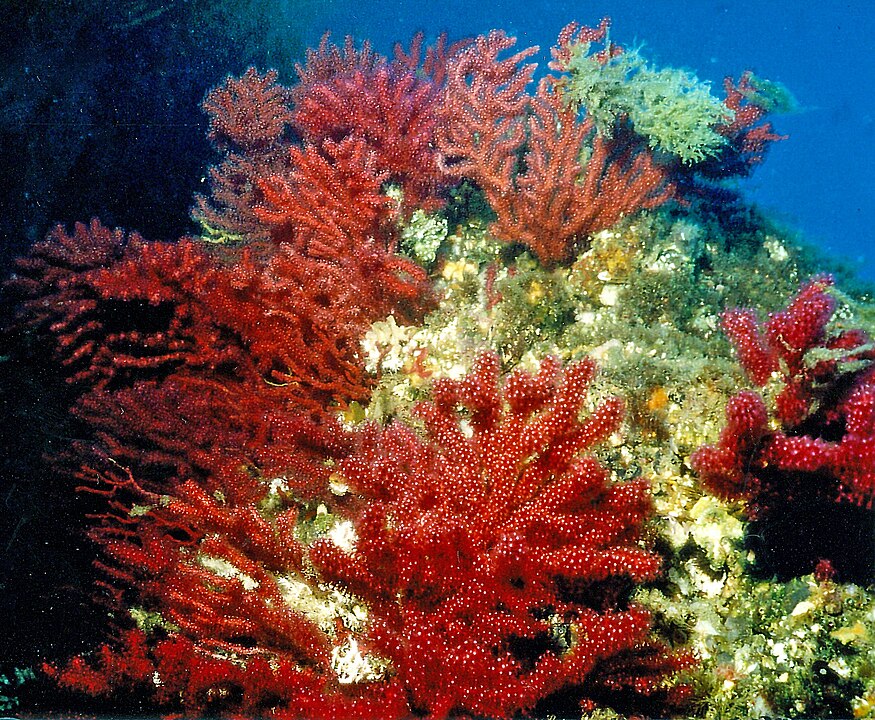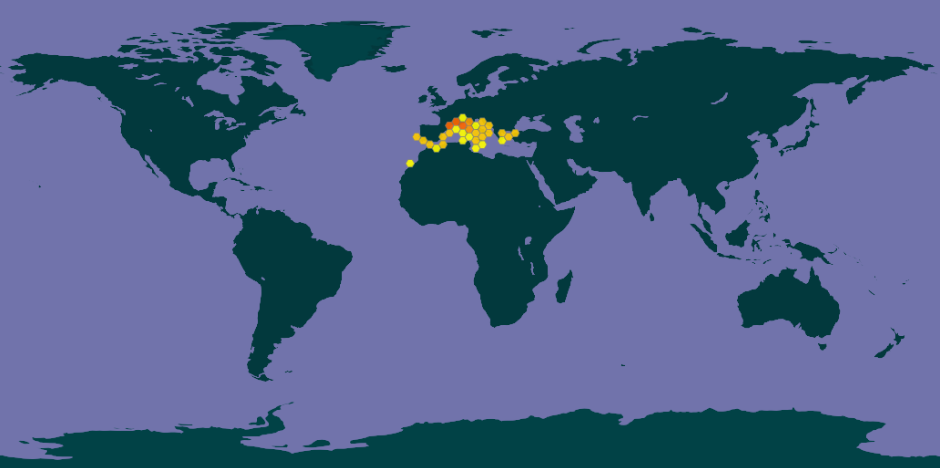Paramuricea clavata (Risso, 1826)
Violescent sea-whip

| Kingdom | Animalia |
| Phylum | Cnidaria |
| Class | Octocorallia |
| Order | Alcyonacea |
| Family | Plexauridae |
| Genus | Paramuricea |
| Species | Paramuricea clavata (Risso, 1826) |
Listen to the SONIFIED SPECIES

Known records of this species

Taxon Description
Paramuricea clavata, the violescent sea-whip, is a species of colonial soft coral in the family Plexauridae. It is found in shallow seas of the north-eastern Atlantic Ocean and the north-western Mediterranean Sea as well as Ionian Sea. This species was first described by the French naturalist Antoine Risso in 1826.
Description
P. clavata has a branching structure forming a fan-shaped colony in a single plane. The stem and branches are stiffened by gorgonin, a complex protein that produces a horny skeleton. The coenenchyme, a thin living layer of cells, covers the skeleton and the polyps protrude from this, each with eight feeding tentacles surrounding a central mouth. The polyps are up to 10 mm (0.4 in) high and the whole colony up to one m (3 ft) high and 1 m across. The colour is usually red, but may be partly yellow.
Distribution and habitat
The violescent sea-whip is native to the coasts of Spain and Portugal in the eastern Atlantic Ocean, and to the western Mediterranean Sea. It grows on reefs with its base buried in the sediment at depths between 10 and 100 m (33 and 328 ft), but usually between 15 and 40 m (49 and 131 ft). It is considered to be an ecosystem engineer, as its presence alters the flow of water, changes sedimentation rates, and alters the distribution of nutrients, thus affecting many organisms in its vicinity.